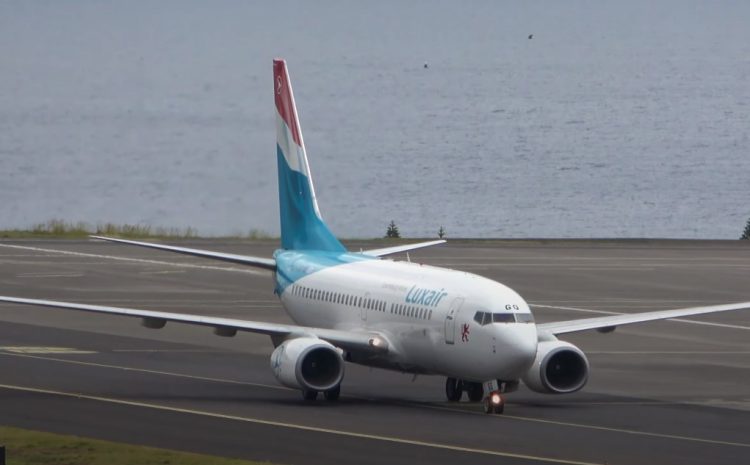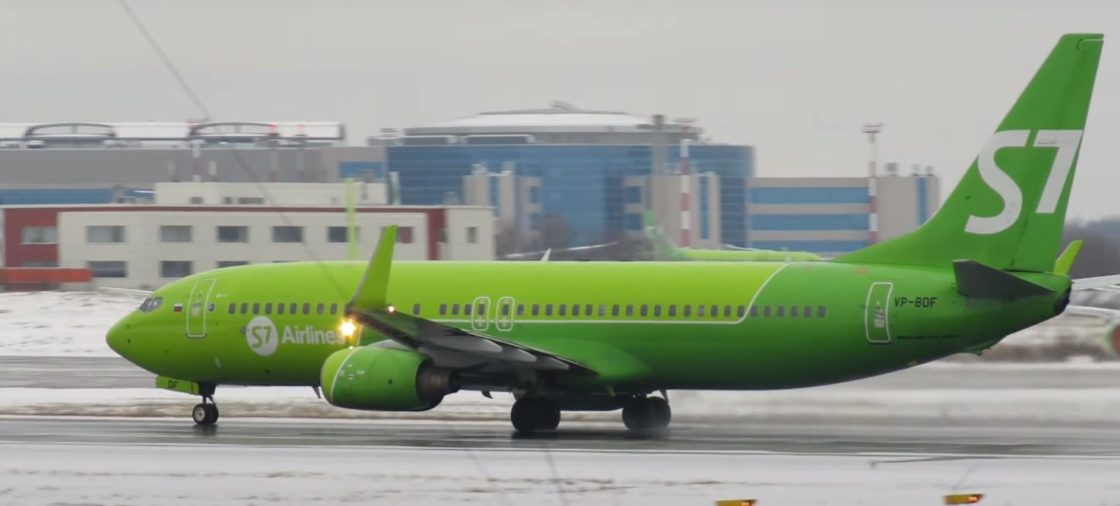Insights into Boeing 737-700 and 737-800 Models

Venture into the captivating world of aviation, as we delve into the intricacies of the 737-700 and 737-800 models. This comprehensive analysis will navigate through the diverse Boeing versions, their unique features, and the evolution they have undergone through the years.”
Unraveling the Boeing 737 Iterations
The Boeing 737 has undergone significant enhancements over time, bringing lucrative advantages to airlines. This article illuminates each version of the 737 model.
There are in excess of 23 distinct variations of the Boeing 737, covering Originals, Classics, Next-Gen, and MAX models, along with versions not used for passenger transportation. Each variation was designed by Boeing with a specific intent in mind, such as increasing the capacity for passengers, augmenting fuel economy, or addressing a specific market niche.
Each progression of the Boeing 737 has presented unique offerings to its patrons and end users. Embark on an exploration of this model’s evolution, and the transformations and perks of its commercial editions.
The Inception Generation
The initial versions of the Boeing 737 were aptly termed the “Original”. It took to the skies for the first time in 1967.
Original 737-100
Boeing developed the 737, capitalizing on the earlier triumphs of the 707 and 727 models. However, the market shifted towards favoring more fuel-efficient twin-engine air machines. Boeing adopted a two-engine configuration over a three or four-engine design to cut operational expenses of the 737 as fuel efficiency became an industry priority.
The -100 model accommodated 115 passengers in its 94ft (29 m) fuselage and had a maximum take-off weight of 42,411kg. Only Lufthansa, Malaysia Airlines, and Avianca made orders for the 737-100, with just 30 of these units manufactured. The final -100 model was decommissioned in 2003.
Original 737-200
The 737-200 variant was conceived following a 1965 order from United Airlines, which requested a lengthier fuselage to accommodate more passengers. The initial units were priced at US$5.2m each (1972 prices). However, an enhanced version, the 737-200 Advanced, swiftly made its debut in the market.
The Advanced model offered enhanced aerodynamics, robust engines, and increased fuel capacity, resulting in a 15% surge in payload and range relative to the original -200s.
The Successor Generation
With the debut of the -600/700/800/900 series, Boeing classified the 737-300/400/500 series as the “Classic”. Between 1984 and 2000, a total of 1,988 Classic 737s were constructed.
Classic 737-300
Boeing’s single-aisle air transporters became a massive hit in terms of sales, which led to significant advancements nearly two decades later, birthing the Classic range, including the -300 to -500 models. The core drivers of these changes were the need for larger passenger capacity and a broader range.
The Classic 737 models saw the introduction of a stronger, more powerful engine – the CFM56-3 series – leading to a 43% power increase compared to previous versions. The -300 prototype (the 1,001st 737 manufactured) had its first flight in February 1984. This enhanced version was more fuel-efficient and could carry up to 149 passengers.
Classic 737-400
The 737-400 model further refined the -300 design by lengthening the fuselage to increase passenger capacity to 188.
The extended size of this model required reinforcement of the wing spar and a tail bumper to guard against tail strikes during take-off. The first flight was completed in February 1988, and the air machines were put into service in October of the same year.
One distinguishing feature of all Boeing models post the original -200 is their unique engine design. When switching from the JT8D-7 to the larger CFM56-3 series, Boeing engineers had to come up with a solution to house the new engine’s size.
An entire redesign of the air machine would have involved significant time, cost, and retraining of pilots. Instead, Boeing opted to retain the existing design, move the engine higher on the wing, and curve the casing at the base of the engine nacelle. This is why most Boeing 737s exhibit a distinctive flat engine profile.
Classic 737-500
Boeing designed the -500 as a unique kind of air machine intended to serve fewer passengers over longer distances. This made it more economical than the aging 737-300. Thanks to the new engine, the -500 model provided a 25% improvement in fuel efficiency compared to the -200.
However, the -500 model had an earlier retirement due to its smaller size. While the 737-300 remained in service for 24 years, the 737-500 was in service for just 21 years.
The Successor Generation
The 737-600/700/800/900 models of the Boeing 737 lineage are collectively known as the Boeing 737 Next Generation, or 737NG. Manufacturing commenced in 1996, and the NG was introduced to service in 1997. More than 7,000 737NG units have been produced by Boeing. The high-pressure ratio CFM56-7 engine was the key upgrade of the NG.
Next Generation 737-600
By the early 90s, Boeing was confronting a significant challenge from the emerging Airbus A320, which threatened Boeing’s market share. To counter this threat, Boeing’s directors greenlit the Next Gen or 737NG models as an upgrade to the classic series.
- The wing redesign marks one of the crucial modifications from the Classic 737 to the Next Generation 737;
- The newly designed wings boasted a broader span and larger surface area, enabling a longer range, higher fuel capacity, and increased maximum take-off weight.
The 737-600 model replaced the -500 and bore a similar design and dimensions to the Airbus A318. Scandinavian Airlines initiated this model, with the first air machine delivered in September 1998.
Next Generation 737-700
Boeing crafted the Next-Generation 737-700 to supersede the -300 model and compete with Airbus’ A319. The inaugural delivery to Southwest Airlines, the launch customer, took place in December 1997.
- The 737-700 has a few variants. The 737-700C, the convertible model, permits seat removal to make room for an enlarged cargo area;
- The 737-700ER, or extended range, combined the -700’s fuselage with the -800’s landing gear and wings to match the range of the Airbus A319LR.
The Next Generation of Boeing 737s provided enhanced range and passenger capacity, making them an instant hit. While these flying machines may not offer the maximum range or capacity among the 737 models, they provide flexible aircraft options for commercial airlines. Concurrently, Boeing implemented digital enhancements in the cockpit.
Next Generation 737-800
The 737-800 is a stretched variant of the -700 model, extending about six meters further. The 737-700 offered seating for 126 passengers in a dual-class arrangement, whereas the -800 could seat up to 162 in the same setup. In a single-class configuration, the -800 can accommodate 189 passengers.
- The -800 served as the direct successor to the -400 and the older 727-200 models;
- It also helped fill the void left by the discontinuation of the MD-80 and MD-90 (post the Boeing and McDonnell Douglas merger).

Positioned as one of the most sought-after narrowbody air machines globally, the Boeing 737-800 competes head-to-head with the Airbus A320.
Next Generation 737-900
The 737-900 witnessed another expansion of the fuselage, bringing the total length to over 42 meters. However, most deliveries were for the 737-900ER variant, with more than 500 air machines delivered compared to 52 for the original -900 model.
- The extended range (-900ER) is the largest of the Next Gen models, accommodating up to 180 passengers in a two-class arrangement or 220 in a single class.
Boeing’s goal was to match the range and capacity of the now-discontinued Boeing 757-200 and compete with the Airbus A321.
The Successor Generation
The MAX 737-7/8/9/10 iterations of the Boeing 737 lineage are collectively known as the Boeing 737 MAX. Boeing offers the MAX in four versions, featuring 153 to 230 seats and ranges of 3,300 to 3,850 nautical miles (6,100 to 7,130 km).
Boeing’s MAX series brings significant enhancements to the range, passenger capacity, and fuel economy. Key differences between the MAX and its forerunners include a new, more efficient CFM LEAP engine, a re-engineered tail cone, and new winglets.
737 MAX 7
The tail cone design of the MAX versions improves fuel efficiency by 1%, while the updated engines also promise better fuel economy as Boeing incorporated models from CFM International’s LEAP family.
- Boeing’s 737 MAX 7 is the smallest of the MAX aircraft;
- With an 18% reduction in fuel cost per seat compared to the -700, the MAX 7 also expands its range by 1,000 nautical miles (1,900 km).
The 737 MAX 7 replaced the -700 variant and was slated to enter operation in January 2019. However, one significant customer, Southwest Airlines, postponed these orders to 2023-2024 in the wake of the tragic crashes in 2018 and 2019.
737 MAX 8
Among the most notable differences between the MAX 7 and MAX 8 is the elongated fuselage of the latter. Moreover, Boeing unveiled the 737 MAX 200 in 2014 as a high-density variant of the MAX 8.
- This MAX 200 provides a 20% increase in cost efficiency per seat and an overall 5% reduction in operating costs;
- When the MAX 8 came into service, it quickly became one of the most energy-efficient, narrow-bodied air machines in the marketplace, offering accommodation for up to 178 individuals in a dual-class cabin setup.
The inaugural commercial flight of the MAX 8 was executed on May 22, 2017, by Malindo Air, covering the Kuala Lumpur to Singapore route.
737 MAX 9
The MAX 9 continued the familiar pattern of enlargement, offering a stretched variant of the MAX 8 model.
- While the MAX 8 provided seating for up to 178 passengers in a dual-class cabin arrangement, the MAX 9 increased this number to 193 passengers.
This air machine started commercial flights with Lion Air in 2018.
737 MAX 10
The MAX 10 is the most recent addition to Boeing’s 737 variants and is the longest so far, providing seating for as many as 230 individuals in a single-class arrangement (204 maximum in a dual-class setup).
The projected delivery date for the 737 MAX 10 is 2023, but due to postponed FAA certification, it may take longer for these air machines to take to the skies.
Concluding Remarks
Boeing’s 737 lineage provides a spectrum of commercial and non-passenger versions that have been in production for over half a century.
The success of the 737 series is underpinned by Boeing’s relentless pursuit of superior fuel efficiency, competitive range, and keeping pace with overall market demand. Coupled with robust competition from other manufacturers like Airbus, the Boeing 737 lineage has become one of the most popular air machines in aviation history.
Despite the remarkable success of the air machine, there have been setbacks along the journey. Two fatal accidents involving brand-new MAX air machines in 2018 and 2019 initiated a global grounding of all MAX air machines, causing considerable challenges for Boeing.
However, the air machine has now regained its wings and continues to carve its history in the realm of aviation.